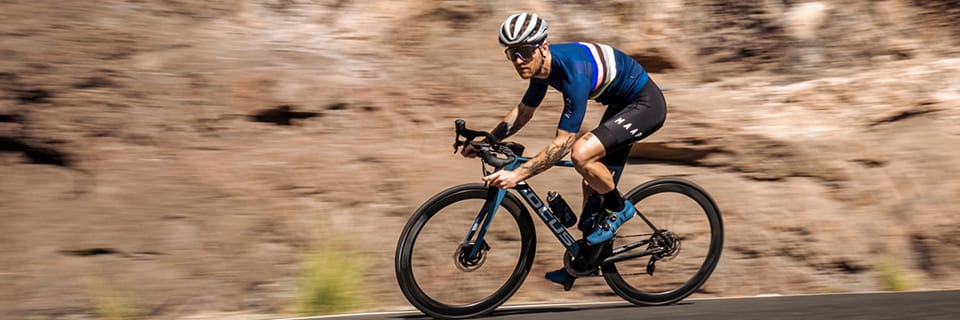Whether you're competing, training or out for a leisurely ride, your racing bike will always take you further and faster. In addition to your budget, there are two essential criteria for choosing the right bike. racing bike and geometry.
Practicalities
Cyclotouring
For a good compromise between comfort, lightness and durability, an aluminum frame, ideally with a carbon fork, is ideal. For the drivetrain, a crankset double crankset (34/50 teeth) with a wide cassette (11-32 or 11-34 teeth, for example) will provide maximum versatility and efficiency on all terrains.
Disc brakes guarantee easy braking in all conditions.
Cyclosportif
An aluminum frame with carbon fork, or a carbon frame, depending on your budget, will provide the ideal combination of comfort and performance. As for touring bikes, a double Compact crankset (34/50 teeth) will provide maximum versatility and efficiency on all terrains. Ideally paired with a cassette a little tighter (11-28 teeth, for example) for finer, more progressive gearing.
Here again, disc brakes guarantee easy braking and safety in all circumstances, but at a heavier weight than a brake pad system.
Competition
Today's quest for performance necessarily involves a carbon frame with aggressive geometry, i.e. a relatively low cockpit and a longer top tube for a better pedaling position and greater aerodynamics (see below for details of the different geometries). Peripherals are also geared towards pure performance, either through their lightness (seatpost, saddle, cockpit) or their efficiency (braking and transmission systems).
In addition, it's important to choose the right chainring size for the type of riding you'll be doing: the Compact (34/50) is ideal for mountain biking, while the Mid-Compact (36/52) and Double (39/53) versions are more suitable for hilly or flat terrain. The wheels are not to be neglected: light and low-profile for the mountains, a little more streamlined for hilly terrain. If you're a frequent rider, we'd even recommend having a pair of wheels dedicated to training and a pair dedicated to competition.
Geometry
Geometry isn't just about choosing the right bike size. It also determines the bike's behavior, offering a specific compromise between performance, comfort, weight, stiffness and aerodynamics. There are three main families of racing bikes.
Aerodynamics
Aero racing bikes are designed for speed. Often studied in wind tunnels, these models feature wider, more aerodynamic tubes to split the air. Generally stiffer, their geometry features a longer reach (frame length, measured from the top of the head tube to the vertical axis passing through the center of the bottom bracket) and a reduced head tube. The position is therefore more forward, more supine, to maximize speed with each pedal stroke. Aero bikes are ideal for powerful riders with a rouleur or sprinter profile.
Endurance
Endurance racing bikes offer the perfect compromise between stiffness, speed and comfort. With their generally longer chainstays, shortened downtube and raised head tube, these models are true all-rounders. This versatility means you can spend long days in the saddle during cyclosportives or classics. From the mountains to the cobblestones, you'll ride comfortably and efficiently everywhere.
Mountain
These racing bikes are designed to offer an optimal weight/stiffness ratio. They feature thinner tubes and shorter chainstays. Their handling is more responsive, lively and agile. Lighter than bikes with aerodynamic and endurance geometries, they are particularly effective for climbing the most demanding passes and performing aggressive relaunches. These bikes are perfect for climbers and those who love the great outdoors and mountain landscapes!
